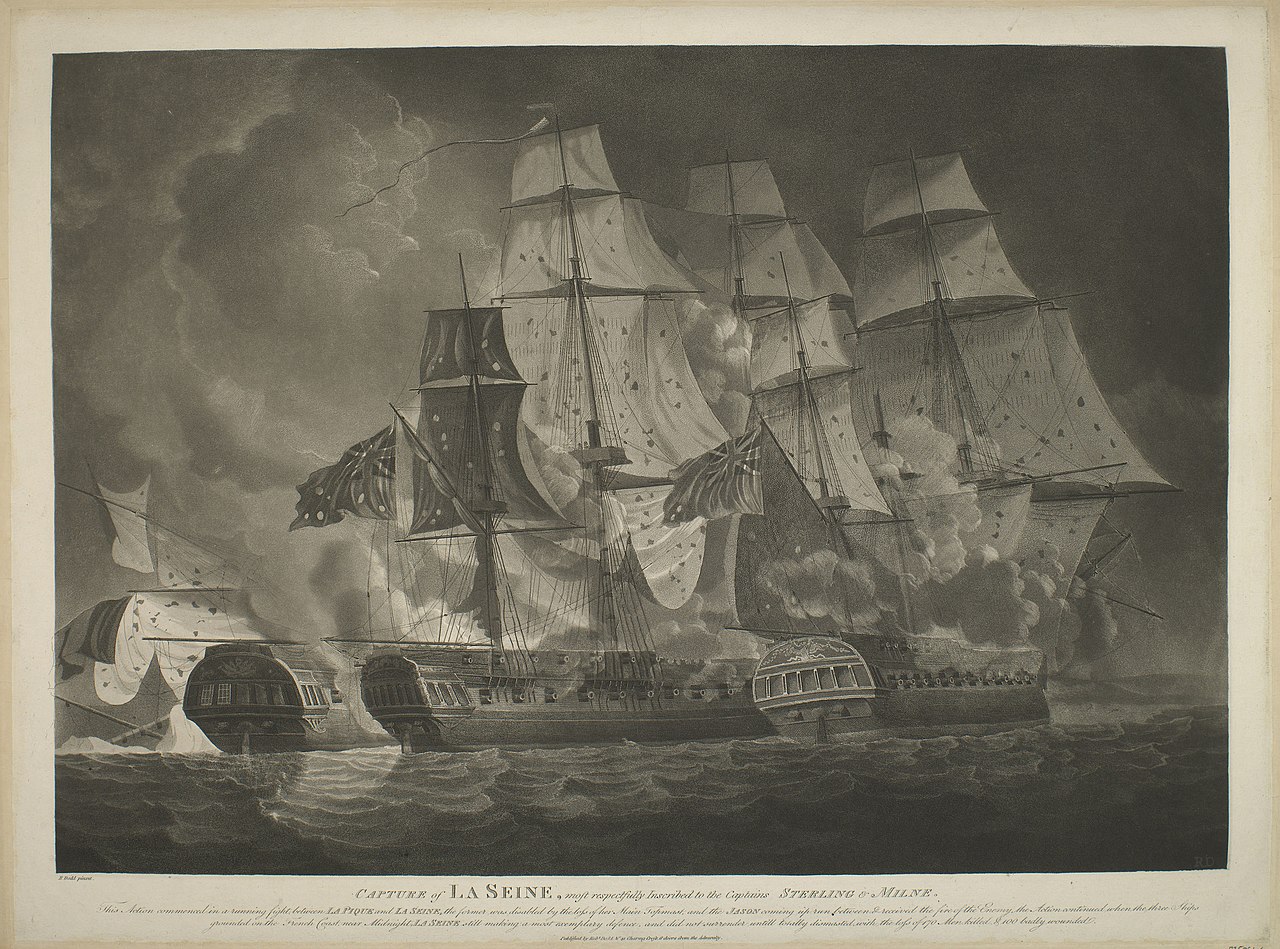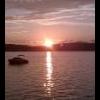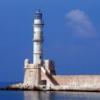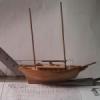HOLIDAY DONATION DRIVE - SUPPORT MSW - DO YOUR PART TO KEEP THIS GREAT FORUM GOING! (Only 72 donations so far out of 49,000 members - Can we at least get 100? C'mon guys!)
×
-
Posts
2,249 -
Joined
-
Last visited
Reputation Activity
-
 Beef Wellington reacted to Blue Ensign in HM Cutter Alert by Blue Ensign - FINISHED - Vanguard Models - 1:64 scale
Beef Wellington reacted to Blue Ensign in HM Cutter Alert by Blue Ensign - FINISHED - Vanguard Models - 1:64 scale
Post 81
A question of Ensigns
I like to add an Ensign to a model it adds a splash of colour and making flags and getting them to hang realistically is an interesting exercise.
One thing that has puzzled me in relation to the Hawke model is the Union flag at its peak.
We know that the rigging of Hawke is original, but a question mark hangs over identification of the model.
There is no Naval cutter named Hawke listed, and perhaps the absence of a Naval Ensign is another indicator.
The NMM has described it as a Revenue cutter.
Revenue cutters did have their own ensign dating from 1694 – a Red Ensign defaced with a ‘castellated gateway’ badge. (1707-1784)
Alert, however, was certainly a Naval Cutter and an ensign is appropriate.
Alert was attached to the Squadron commanded by Admiral Augustus Keppel, Admiral of the White, so a White Ensign it is.
Unusual in modelling, Roger Cole in his build of Alert goes into some detail about flag sizes.
Alert would have carried a complement of five different size ensigns or flags ranging from her number one, down through number four, plus a Jack.
In size, the fly of the number one was generally about equivalent to the molded beam of the vessel, the hoist was 5/9ths of the fly at this time.
The other ensigns were proportional and stepped down where the hoist of one became the length of the fly on the next smaller ensign.
The Jack was equal to the canton of the largest ensign.
https://www.craftsmanshipmuseum.com/Cole.htm
Given that the beam of Alert was 25’10” (The fly) the hoist would be 14’ 4” quite a large flag for a cutter.
At scale this would be 123mm (fly) 68.26mm (hoist)
Using these proportions, I scaled out the ensigns;
The Number one or Battle Ensign does look huge in relation to the model, but the Number two looks a tad small for the model display purposes.
No 1 - Battle Ensign
No 2 Ensign – General Service
No 3 – Storm Ensign
No 4 – Harbour Ensign.
Jack
Many contemporary paintings show the Union flag with a narrower diagonal white cross representing the Scottish saltire. The ground of the flag is also shown as a much darker blue.
I have adopted this design which I prefer to the broader white cross and brighter blue ground of many of the commercially available Ensigns.
The trick now is to reproduce this as a viable Ensign which will be the subject of my next post.
B.E.
20/03/2020
-
 Beef Wellington reacted to MEDDO in Queen Anne Barge by MEDDO - FINISHED - Syren - scale 1:24
Beef Wellington reacted to MEDDO in Queen Anne Barge by MEDDO - FINISHED - Syren - scale 1:24
Floors in. Had to keep sanding down the frames until it fit at the appropriate level. Fitting the very fore floor was the most difficult part but went smoothly.
Going to WOP the floors and let dry overnight.
Deo Volente
-
 Beef Wellington got a reaction from toms10 in HMS Snake by Beef Wellington - FINISHED - Caldercraft - Scale 1: 64 - First wooden ship build
Beef Wellington got a reaction from toms10 in HMS Snake by Beef Wellington - FINISHED - Caldercraft - Scale 1: 64 - First wooden ship build
Greetings all,
Really is time I got back to finish Snake, time just flies, and incredible that my last update was July 2015! . Firstly, she's been staring at me from across the room and I can't avert my eyes any longer from embarrassment with her so neglected. Secondly, I feel I really need to finish her to be able to hold my head up on this forum by having actually completed something, and thirdly, there are some things I need to contemplate on 'Jason' and skills to hone before I move forward.
I'll be honest, it was a little bit of a challenge getting going again, there are many things about her that I'm not too happy with, but recognize that this is still a first build using kit supplied parts so just need to be happy with it. One trick I've found to reduce 'fuzzies' is simply to use a brush to stroke warm water onto the line. I've tried bees wax, but from my experience it just seemed to result in dandruff!
So what exactly has been done:
Rigging on the foremast has completed for now to include the sheets and clew-line Main mast yards are installed and similarly completed (some lines that belay outside of the line of the main shroud are being left for now to give more room to access the mizzen mast area) Much rework has been done in the completion of the above tasks, which certainly slowed progress, including: Re-rigging many of the horses in situ, trying to give them a little more 'slack' Definitely a case of 2 steps forward and 1 step back picking this back up. The dexterity needed to navigate around the increasingly catch prone pointy bits eluded me, and for every yard rigged it seemed I had to re-strop a block that slipped loose as a result of unwanted contact with a spar or line. Thankfully nothing wooden has broken. Putting a positive spin on this, it definitely required honing of skills - the most aggravating and challenging fix was probably the violin block for the fore mainyard lift (photo below). This was re-stropped in situ and required keeping the existing lines suitably taught and navigating around the existing rigging- despite some rather salty language, this was honestly a bit of a boost after recognizing that if that was possible, pretty much anything can be fixed. (Seizing black thread around black line against the black woodwork proved too much for the eye...)
Finally where things stand. I'm standing by the decision to rig starting with forward masts and moving aft, going from lower to upper. Suspect next up will be the spanker and gaff before installing the cross-jack.
-
 Beef Wellington reacted to MEDDO in Queen Anne Barge by MEDDO - FINISHED - Syren - scale 1:24
Beef Wellington reacted to MEDDO in Queen Anne Barge by MEDDO - FINISHED - Syren - scale 1:24
Lotsa progress on the model over last few days. I added some WOP last night and the cherry really does look nice.
Tried some test nails just to see how deep I had to drill. Seemed pretty straightforward. Also added some Windsor & Newton crimson in 2 quick coats just to see what it looked like. No real prep of the surface just a quick color check
-
 Beef Wellington got a reaction from shipcarpenter in HMS Snake by Beef Wellington - FINISHED - Caldercraft - Scale 1: 64 - First wooden ship build
Beef Wellington got a reaction from shipcarpenter in HMS Snake by Beef Wellington - FINISHED - Caldercraft - Scale 1: 64 - First wooden ship build
Greetings all,
Really is time I got back to finish Snake, time just flies, and incredible that my last update was July 2015! . Firstly, she's been staring at me from across the room and I can't avert my eyes any longer from embarrassment with her so neglected. Secondly, I feel I really need to finish her to be able to hold my head up on this forum by having actually completed something, and thirdly, there are some things I need to contemplate on 'Jason' and skills to hone before I move forward.
I'll be honest, it was a little bit of a challenge getting going again, there are many things about her that I'm not too happy with, but recognize that this is still a first build using kit supplied parts so just need to be happy with it. One trick I've found to reduce 'fuzzies' is simply to use a brush to stroke warm water onto the line. I've tried bees wax, but from my experience it just seemed to result in dandruff!
So what exactly has been done:
Rigging on the foremast has completed for now to include the sheets and clew-line Main mast yards are installed and similarly completed (some lines that belay outside of the line of the main shroud are being left for now to give more room to access the mizzen mast area) Much rework has been done in the completion of the above tasks, which certainly slowed progress, including: Re-rigging many of the horses in situ, trying to give them a little more 'slack' Definitely a case of 2 steps forward and 1 step back picking this back up. The dexterity needed to navigate around the increasingly catch prone pointy bits eluded me, and for every yard rigged it seemed I had to re-strop a block that slipped loose as a result of unwanted contact with a spar or line. Thankfully nothing wooden has broken. Putting a positive spin on this, it definitely required honing of skills - the most aggravating and challenging fix was probably the violin block for the fore mainyard lift (photo below). This was re-stropped in situ and required keeping the existing lines suitably taught and navigating around the existing rigging- despite some rather salty language, this was honestly a bit of a boost after recognizing that if that was possible, pretty much anything can be fixed. (Seizing black thread around black line against the black woodwork proved too much for the eye...)
Finally where things stand. I'm standing by the decision to rig starting with forward masts and moving aft, going from lower to upper. Suspect next up will be the spanker and gaff before installing the cross-jack.
-
 Beef Wellington got a reaction from drtrap in HMS Snake by Beef Wellington - FINISHED - Caldercraft - Scale 1: 64 - First wooden ship build
Beef Wellington got a reaction from drtrap in HMS Snake by Beef Wellington - FINISHED - Caldercraft - Scale 1: 64 - First wooden ship build
Greetings all,
Really is time I got back to finish Snake, time just flies, and incredible that my last update was July 2015! . Firstly, she's been staring at me from across the room and I can't avert my eyes any longer from embarrassment with her so neglected. Secondly, I feel I really need to finish her to be able to hold my head up on this forum by having actually completed something, and thirdly, there are some things I need to contemplate on 'Jason' and skills to hone before I move forward.
I'll be honest, it was a little bit of a challenge getting going again, there are many things about her that I'm not too happy with, but recognize that this is still a first build using kit supplied parts so just need to be happy with it. One trick I've found to reduce 'fuzzies' is simply to use a brush to stroke warm water onto the line. I've tried bees wax, but from my experience it just seemed to result in dandruff!
So what exactly has been done:
Rigging on the foremast has completed for now to include the sheets and clew-line Main mast yards are installed and similarly completed (some lines that belay outside of the line of the main shroud are being left for now to give more room to access the mizzen mast area) Much rework has been done in the completion of the above tasks, which certainly slowed progress, including: Re-rigging many of the horses in situ, trying to give them a little more 'slack' Definitely a case of 2 steps forward and 1 step back picking this back up. The dexterity needed to navigate around the increasingly catch prone pointy bits eluded me, and for every yard rigged it seemed I had to re-strop a block that slipped loose as a result of unwanted contact with a spar or line. Thankfully nothing wooden has broken. Putting a positive spin on this, it definitely required honing of skills - the most aggravating and challenging fix was probably the violin block for the fore mainyard lift (photo below). This was re-stropped in situ and required keeping the existing lines suitably taught and navigating around the existing rigging- despite some rather salty language, this was honestly a bit of a boost after recognizing that if that was possible, pretty much anything can be fixed. (Seizing black thread around black line against the black woodwork proved too much for the eye...)
Finally where things stand. I'm standing by the decision to rig starting with forward masts and moving aft, going from lower to upper. Suspect next up will be the spanker and gaff before installing the cross-jack.
-
 Beef Wellington got a reaction from usedtosail in HMS Snake by Beef Wellington - FINISHED - Caldercraft - Scale 1: 64 - First wooden ship build
Beef Wellington got a reaction from usedtosail in HMS Snake by Beef Wellington - FINISHED - Caldercraft - Scale 1: 64 - First wooden ship build
Greetings all,
Really is time I got back to finish Snake, time just flies, and incredible that my last update was July 2015! . Firstly, she's been staring at me from across the room and I can't avert my eyes any longer from embarrassment with her so neglected. Secondly, I feel I really need to finish her to be able to hold my head up on this forum by having actually completed something, and thirdly, there are some things I need to contemplate on 'Jason' and skills to hone before I move forward.
I'll be honest, it was a little bit of a challenge getting going again, there are many things about her that I'm not too happy with, but recognize that this is still a first build using kit supplied parts so just need to be happy with it. One trick I've found to reduce 'fuzzies' is simply to use a brush to stroke warm water onto the line. I've tried bees wax, but from my experience it just seemed to result in dandruff!
So what exactly has been done:
Rigging on the foremast has completed for now to include the sheets and clew-line Main mast yards are installed and similarly completed (some lines that belay outside of the line of the main shroud are being left for now to give more room to access the mizzen mast area) Much rework has been done in the completion of the above tasks, which certainly slowed progress, including: Re-rigging many of the horses in situ, trying to give them a little more 'slack' Definitely a case of 2 steps forward and 1 step back picking this back up. The dexterity needed to navigate around the increasingly catch prone pointy bits eluded me, and for every yard rigged it seemed I had to re-strop a block that slipped loose as a result of unwanted contact with a spar or line. Thankfully nothing wooden has broken. Putting a positive spin on this, it definitely required honing of skills - the most aggravating and challenging fix was probably the violin block for the fore mainyard lift (photo below). This was re-stropped in situ and required keeping the existing lines suitably taught and navigating around the existing rigging- despite some rather salty language, this was honestly a bit of a boost after recognizing that if that was possible, pretty much anything can be fixed. (Seizing black thread around black line against the black woodwork proved too much for the eye...)
Finally where things stand. I'm standing by the decision to rig starting with forward masts and moving aft, going from lower to upper. Suspect next up will be the spanker and gaff before installing the cross-jack.
-
 Beef Wellington got a reaction from ccoyle in HMS Snake by Beef Wellington - FINISHED - Caldercraft - Scale 1: 64 - First wooden ship build
Beef Wellington got a reaction from ccoyle in HMS Snake by Beef Wellington - FINISHED - Caldercraft - Scale 1: 64 - First wooden ship build
Greetings all,
Really is time I got back to finish Snake, time just flies, and incredible that my last update was July 2015! . Firstly, she's been staring at me from across the room and I can't avert my eyes any longer from embarrassment with her so neglected. Secondly, I feel I really need to finish her to be able to hold my head up on this forum by having actually completed something, and thirdly, there are some things I need to contemplate on 'Jason' and skills to hone before I move forward.
I'll be honest, it was a little bit of a challenge getting going again, there are many things about her that I'm not too happy with, but recognize that this is still a first build using kit supplied parts so just need to be happy with it. One trick I've found to reduce 'fuzzies' is simply to use a brush to stroke warm water onto the line. I've tried bees wax, but from my experience it just seemed to result in dandruff!
So what exactly has been done:
Rigging on the foremast has completed for now to include the sheets and clew-line Main mast yards are installed and similarly completed (some lines that belay outside of the line of the main shroud are being left for now to give more room to access the mizzen mast area) Much rework has been done in the completion of the above tasks, which certainly slowed progress, including: Re-rigging many of the horses in situ, trying to give them a little more 'slack' Definitely a case of 2 steps forward and 1 step back picking this back up. The dexterity needed to navigate around the increasingly catch prone pointy bits eluded me, and for every yard rigged it seemed I had to re-strop a block that slipped loose as a result of unwanted contact with a spar or line. Thankfully nothing wooden has broken. Putting a positive spin on this, it definitely required honing of skills - the most aggravating and challenging fix was probably the violin block for the fore mainyard lift (photo below). This was re-stropped in situ and required keeping the existing lines suitably taught and navigating around the existing rigging- despite some rather salty language, this was honestly a bit of a boost after recognizing that if that was possible, pretty much anything can be fixed. (Seizing black thread around black line against the black woodwork proved too much for the eye...)
Finally where things stand. I'm standing by the decision to rig starting with forward masts and moving aft, going from lower to upper. Suspect next up will be the spanker and gaff before installing the cross-jack.
-
 Beef Wellington got a reaction from JpR62 in HMS Snake by Beef Wellington - FINISHED - Caldercraft - Scale 1: 64 - First wooden ship build
Beef Wellington got a reaction from JpR62 in HMS Snake by Beef Wellington - FINISHED - Caldercraft - Scale 1: 64 - First wooden ship build
Greetings all,
Really is time I got back to finish Snake, time just flies, and incredible that my last update was July 2015! . Firstly, she's been staring at me from across the room and I can't avert my eyes any longer from embarrassment with her so neglected. Secondly, I feel I really need to finish her to be able to hold my head up on this forum by having actually completed something, and thirdly, there are some things I need to contemplate on 'Jason' and skills to hone before I move forward.
I'll be honest, it was a little bit of a challenge getting going again, there are many things about her that I'm not too happy with, but recognize that this is still a first build using kit supplied parts so just need to be happy with it. One trick I've found to reduce 'fuzzies' is simply to use a brush to stroke warm water onto the line. I've tried bees wax, but from my experience it just seemed to result in dandruff!
So what exactly has been done:
Rigging on the foremast has completed for now to include the sheets and clew-line Main mast yards are installed and similarly completed (some lines that belay outside of the line of the main shroud are being left for now to give more room to access the mizzen mast area) Much rework has been done in the completion of the above tasks, which certainly slowed progress, including: Re-rigging many of the horses in situ, trying to give them a little more 'slack' Definitely a case of 2 steps forward and 1 step back picking this back up. The dexterity needed to navigate around the increasingly catch prone pointy bits eluded me, and for every yard rigged it seemed I had to re-strop a block that slipped loose as a result of unwanted contact with a spar or line. Thankfully nothing wooden has broken. Putting a positive spin on this, it definitely required honing of skills - the most aggravating and challenging fix was probably the violin block for the fore mainyard lift (photo below). This was re-stropped in situ and required keeping the existing lines suitably taught and navigating around the existing rigging- despite some rather salty language, this was honestly a bit of a boost after recognizing that if that was possible, pretty much anything can be fixed. (Seizing black thread around black line against the black woodwork proved too much for the eye...)
Finally where things stand. I'm standing by the decision to rig starting with forward masts and moving aft, going from lower to upper. Suspect next up will be the spanker and gaff before installing the cross-jack.
-
 Beef Wellington got a reaction from Robert29 in HMS Snake by Beef Wellington - FINISHED - Caldercraft - Scale 1: 64 - First wooden ship build
Beef Wellington got a reaction from Robert29 in HMS Snake by Beef Wellington - FINISHED - Caldercraft - Scale 1: 64 - First wooden ship build
Greetings all,
Really is time I got back to finish Snake, time just flies, and incredible that my last update was July 2015! . Firstly, she's been staring at me from across the room and I can't avert my eyes any longer from embarrassment with her so neglected. Secondly, I feel I really need to finish her to be able to hold my head up on this forum by having actually completed something, and thirdly, there are some things I need to contemplate on 'Jason' and skills to hone before I move forward.
I'll be honest, it was a little bit of a challenge getting going again, there are many things about her that I'm not too happy with, but recognize that this is still a first build using kit supplied parts so just need to be happy with it. One trick I've found to reduce 'fuzzies' is simply to use a brush to stroke warm water onto the line. I've tried bees wax, but from my experience it just seemed to result in dandruff!
So what exactly has been done:
Rigging on the foremast has completed for now to include the sheets and clew-line Main mast yards are installed and similarly completed (some lines that belay outside of the line of the main shroud are being left for now to give more room to access the mizzen mast area) Much rework has been done in the completion of the above tasks, which certainly slowed progress, including: Re-rigging many of the horses in situ, trying to give them a little more 'slack' Definitely a case of 2 steps forward and 1 step back picking this back up. The dexterity needed to navigate around the increasingly catch prone pointy bits eluded me, and for every yard rigged it seemed I had to re-strop a block that slipped loose as a result of unwanted contact with a spar or line. Thankfully nothing wooden has broken. Putting a positive spin on this, it definitely required honing of skills - the most aggravating and challenging fix was probably the violin block for the fore mainyard lift (photo below). This was re-stropped in situ and required keeping the existing lines suitably taught and navigating around the existing rigging- despite some rather salty language, this was honestly a bit of a boost after recognizing that if that was possible, pretty much anything can be fixed. (Seizing black thread around black line against the black woodwork proved too much for the eye...)
Finally where things stand. I'm standing by the decision to rig starting with forward masts and moving aft, going from lower to upper. Suspect next up will be the spanker and gaff before installing the cross-jack.
-
 Beef Wellington got a reaction from egkb in HMS Snake by Beef Wellington - FINISHED - Caldercraft - Scale 1: 64 - First wooden ship build
Beef Wellington got a reaction from egkb in HMS Snake by Beef Wellington - FINISHED - Caldercraft - Scale 1: 64 - First wooden ship build
Greetings all,
Really is time I got back to finish Snake, time just flies, and incredible that my last update was July 2015! . Firstly, she's been staring at me from across the room and I can't avert my eyes any longer from embarrassment with her so neglected. Secondly, I feel I really need to finish her to be able to hold my head up on this forum by having actually completed something, and thirdly, there are some things I need to contemplate on 'Jason' and skills to hone before I move forward.
I'll be honest, it was a little bit of a challenge getting going again, there are many things about her that I'm not too happy with, but recognize that this is still a first build using kit supplied parts so just need to be happy with it. One trick I've found to reduce 'fuzzies' is simply to use a brush to stroke warm water onto the line. I've tried bees wax, but from my experience it just seemed to result in dandruff!
So what exactly has been done:
Rigging on the foremast has completed for now to include the sheets and clew-line Main mast yards are installed and similarly completed (some lines that belay outside of the line of the main shroud are being left for now to give more room to access the mizzen mast area) Much rework has been done in the completion of the above tasks, which certainly slowed progress, including: Re-rigging many of the horses in situ, trying to give them a little more 'slack' Definitely a case of 2 steps forward and 1 step back picking this back up. The dexterity needed to navigate around the increasingly catch prone pointy bits eluded me, and for every yard rigged it seemed I had to re-strop a block that slipped loose as a result of unwanted contact with a spar or line. Thankfully nothing wooden has broken. Putting a positive spin on this, it definitely required honing of skills - the most aggravating and challenging fix was probably the violin block for the fore mainyard lift (photo below). This was re-stropped in situ and required keeping the existing lines suitably taught and navigating around the existing rigging- despite some rather salty language, this was honestly a bit of a boost after recognizing that if that was possible, pretty much anything can be fixed. (Seizing black thread around black line against the black woodwork proved too much for the eye...)
Finally where things stand. I'm standing by the decision to rig starting with forward masts and moving aft, going from lower to upper. Suspect next up will be the spanker and gaff before installing the cross-jack.
-
 Beef Wellington got a reaction from KARAVOKIRIS in HMS Snake by Beef Wellington - FINISHED - Caldercraft - Scale 1: 64 - First wooden ship build
Beef Wellington got a reaction from KARAVOKIRIS in HMS Snake by Beef Wellington - FINISHED - Caldercraft - Scale 1: 64 - First wooden ship build
Greetings all,
Really is time I got back to finish Snake, time just flies, and incredible that my last update was July 2015! . Firstly, she's been staring at me from across the room and I can't avert my eyes any longer from embarrassment with her so neglected. Secondly, I feel I really need to finish her to be able to hold my head up on this forum by having actually completed something, and thirdly, there are some things I need to contemplate on 'Jason' and skills to hone before I move forward.
I'll be honest, it was a little bit of a challenge getting going again, there are many things about her that I'm not too happy with, but recognize that this is still a first build using kit supplied parts so just need to be happy with it. One trick I've found to reduce 'fuzzies' is simply to use a brush to stroke warm water onto the line. I've tried bees wax, but from my experience it just seemed to result in dandruff!
So what exactly has been done:
Rigging on the foremast has completed for now to include the sheets and clew-line Main mast yards are installed and similarly completed (some lines that belay outside of the line of the main shroud are being left for now to give more room to access the mizzen mast area) Much rework has been done in the completion of the above tasks, which certainly slowed progress, including: Re-rigging many of the horses in situ, trying to give them a little more 'slack' Definitely a case of 2 steps forward and 1 step back picking this back up. The dexterity needed to navigate around the increasingly catch prone pointy bits eluded me, and for every yard rigged it seemed I had to re-strop a block that slipped loose as a result of unwanted contact with a spar or line. Thankfully nothing wooden has broken. Putting a positive spin on this, it definitely required honing of skills - the most aggravating and challenging fix was probably the violin block for the fore mainyard lift (photo below). This was re-stropped in situ and required keeping the existing lines suitably taught and navigating around the existing rigging- despite some rather salty language, this was honestly a bit of a boost after recognizing that if that was possible, pretty much anything can be fixed. (Seizing black thread around black line against the black woodwork proved too much for the eye...)
Finally where things stand. I'm standing by the decision to rig starting with forward masts and moving aft, going from lower to upper. Suspect next up will be the spanker and gaff before installing the cross-jack.
-
 Beef Wellington got a reaction from mort stoll in HMS Snake by Beef Wellington - FINISHED - Caldercraft - Scale 1: 64 - First wooden ship build
Beef Wellington got a reaction from mort stoll in HMS Snake by Beef Wellington - FINISHED - Caldercraft - Scale 1: 64 - First wooden ship build
Greetings all,
Really is time I got back to finish Snake, time just flies, and incredible that my last update was July 2015! . Firstly, she's been staring at me from across the room and I can't avert my eyes any longer from embarrassment with her so neglected. Secondly, I feel I really need to finish her to be able to hold my head up on this forum by having actually completed something, and thirdly, there are some things I need to contemplate on 'Jason' and skills to hone before I move forward.
I'll be honest, it was a little bit of a challenge getting going again, there are many things about her that I'm not too happy with, but recognize that this is still a first build using kit supplied parts so just need to be happy with it. One trick I've found to reduce 'fuzzies' is simply to use a brush to stroke warm water onto the line. I've tried bees wax, but from my experience it just seemed to result in dandruff!
So what exactly has been done:
Rigging on the foremast has completed for now to include the sheets and clew-line Main mast yards are installed and similarly completed (some lines that belay outside of the line of the main shroud are being left for now to give more room to access the mizzen mast area) Much rework has been done in the completion of the above tasks, which certainly slowed progress, including: Re-rigging many of the horses in situ, trying to give them a little more 'slack' Definitely a case of 2 steps forward and 1 step back picking this back up. The dexterity needed to navigate around the increasingly catch prone pointy bits eluded me, and for every yard rigged it seemed I had to re-strop a block that slipped loose as a result of unwanted contact with a spar or line. Thankfully nothing wooden has broken. Putting a positive spin on this, it definitely required honing of skills - the most aggravating and challenging fix was probably the violin block for the fore mainyard lift (photo below). This was re-stropped in situ and required keeping the existing lines suitably taught and navigating around the existing rigging- despite some rather salty language, this was honestly a bit of a boost after recognizing that if that was possible, pretty much anything can be fixed. (Seizing black thread around black line against the black woodwork proved too much for the eye...)
Finally where things stand. I'm standing by the decision to rig starting with forward masts and moving aft, going from lower to upper. Suspect next up will be the spanker and gaff before installing the cross-jack.
-
 Beef Wellington got a reaction from realworkingsailor in HMS Snake by Beef Wellington - FINISHED - Caldercraft - Scale 1: 64 - First wooden ship build
Beef Wellington got a reaction from realworkingsailor in HMS Snake by Beef Wellington - FINISHED - Caldercraft - Scale 1: 64 - First wooden ship build
Greetings all,
Really is time I got back to finish Snake, time just flies, and incredible that my last update was July 2015! . Firstly, she's been staring at me from across the room and I can't avert my eyes any longer from embarrassment with her so neglected. Secondly, I feel I really need to finish her to be able to hold my head up on this forum by having actually completed something, and thirdly, there are some things I need to contemplate on 'Jason' and skills to hone before I move forward.
I'll be honest, it was a little bit of a challenge getting going again, there are many things about her that I'm not too happy with, but recognize that this is still a first build using kit supplied parts so just need to be happy with it. One trick I've found to reduce 'fuzzies' is simply to use a brush to stroke warm water onto the line. I've tried bees wax, but from my experience it just seemed to result in dandruff!
So what exactly has been done:
Rigging on the foremast has completed for now to include the sheets and clew-line Main mast yards are installed and similarly completed (some lines that belay outside of the line of the main shroud are being left for now to give more room to access the mizzen mast area) Much rework has been done in the completion of the above tasks, which certainly slowed progress, including: Re-rigging many of the horses in situ, trying to give them a little more 'slack' Definitely a case of 2 steps forward and 1 step back picking this back up. The dexterity needed to navigate around the increasingly catch prone pointy bits eluded me, and for every yard rigged it seemed I had to re-strop a block that slipped loose as a result of unwanted contact with a spar or line. Thankfully nothing wooden has broken. Putting a positive spin on this, it definitely required honing of skills - the most aggravating and challenging fix was probably the violin block for the fore mainyard lift (photo below). This was re-stropped in situ and required keeping the existing lines suitably taught and navigating around the existing rigging- despite some rather salty language, this was honestly a bit of a boost after recognizing that if that was possible, pretty much anything can be fixed. (Seizing black thread around black line against the black woodwork proved too much for the eye...)
Finally where things stand. I'm standing by the decision to rig starting with forward masts and moving aft, going from lower to upper. Suspect next up will be the spanker and gaff before installing the cross-jack.
-
 Beef Wellington got a reaction from Richard44 in HMS Snake by Beef Wellington - FINISHED - Caldercraft - Scale 1: 64 - First wooden ship build
Beef Wellington got a reaction from Richard44 in HMS Snake by Beef Wellington - FINISHED - Caldercraft - Scale 1: 64 - First wooden ship build
Greetings all,
Really is time I got back to finish Snake, time just flies, and incredible that my last update was July 2015! . Firstly, she's been staring at me from across the room and I can't avert my eyes any longer from embarrassment with her so neglected. Secondly, I feel I really need to finish her to be able to hold my head up on this forum by having actually completed something, and thirdly, there are some things I need to contemplate on 'Jason' and skills to hone before I move forward.
I'll be honest, it was a little bit of a challenge getting going again, there are many things about her that I'm not too happy with, but recognize that this is still a first build using kit supplied parts so just need to be happy with it. One trick I've found to reduce 'fuzzies' is simply to use a brush to stroke warm water onto the line. I've tried bees wax, but from my experience it just seemed to result in dandruff!
So what exactly has been done:
Rigging on the foremast has completed for now to include the sheets and clew-line Main mast yards are installed and similarly completed (some lines that belay outside of the line of the main shroud are being left for now to give more room to access the mizzen mast area) Much rework has been done in the completion of the above tasks, which certainly slowed progress, including: Re-rigging many of the horses in situ, trying to give them a little more 'slack' Definitely a case of 2 steps forward and 1 step back picking this back up. The dexterity needed to navigate around the increasingly catch prone pointy bits eluded me, and for every yard rigged it seemed I had to re-strop a block that slipped loose as a result of unwanted contact with a spar or line. Thankfully nothing wooden has broken. Putting a positive spin on this, it definitely required honing of skills - the most aggravating and challenging fix was probably the violin block for the fore mainyard lift (photo below). This was re-stropped in situ and required keeping the existing lines suitably taught and navigating around the existing rigging- despite some rather salty language, this was honestly a bit of a boost after recognizing that if that was possible, pretty much anything can be fixed. (Seizing black thread around black line against the black woodwork proved too much for the eye...)
Finally where things stand. I'm standing by the decision to rig starting with forward masts and moving aft, going from lower to upper. Suspect next up will be the spanker and gaff before installing the cross-jack.
-
 Beef Wellington got a reaction from GrandpaPhil in HMS Snake by Beef Wellington - FINISHED - Caldercraft - Scale 1: 64 - First wooden ship build
Beef Wellington got a reaction from GrandpaPhil in HMS Snake by Beef Wellington - FINISHED - Caldercraft - Scale 1: 64 - First wooden ship build
Greetings all,
Really is time I got back to finish Snake, time just flies, and incredible that my last update was July 2015! . Firstly, she's been staring at me from across the room and I can't avert my eyes any longer from embarrassment with her so neglected. Secondly, I feel I really need to finish her to be able to hold my head up on this forum by having actually completed something, and thirdly, there are some things I need to contemplate on 'Jason' and skills to hone before I move forward.
I'll be honest, it was a little bit of a challenge getting going again, there are many things about her that I'm not too happy with, but recognize that this is still a first build using kit supplied parts so just need to be happy with it. One trick I've found to reduce 'fuzzies' is simply to use a brush to stroke warm water onto the line. I've tried bees wax, but from my experience it just seemed to result in dandruff!
So what exactly has been done:
Rigging on the foremast has completed for now to include the sheets and clew-line Main mast yards are installed and similarly completed (some lines that belay outside of the line of the main shroud are being left for now to give more room to access the mizzen mast area) Much rework has been done in the completion of the above tasks, which certainly slowed progress, including: Re-rigging many of the horses in situ, trying to give them a little more 'slack' Definitely a case of 2 steps forward and 1 step back picking this back up. The dexterity needed to navigate around the increasingly catch prone pointy bits eluded me, and for every yard rigged it seemed I had to re-strop a block that slipped loose as a result of unwanted contact with a spar or line. Thankfully nothing wooden has broken. Putting a positive spin on this, it definitely required honing of skills - the most aggravating and challenging fix was probably the violin block for the fore mainyard lift (photo below). This was re-stropped in situ and required keeping the existing lines suitably taught and navigating around the existing rigging- despite some rather salty language, this was honestly a bit of a boost after recognizing that if that was possible, pretty much anything can be fixed. (Seizing black thread around black line against the black woodwork proved too much for the eye...)
Finally where things stand. I'm standing by the decision to rig starting with forward masts and moving aft, going from lower to upper. Suspect next up will be the spanker and gaff before installing the cross-jack.
-
 Beef Wellington reacted to Old Collingwood in HMS Snake by Beef Wellington - FINISHED - Caldercraft - Scale 1: 64 - First wooden ship build
Beef Wellington reacted to Old Collingwood in HMS Snake by Beef Wellington - FINISHED - Caldercraft - Scale 1: 64 - First wooden ship build
Very very nice work - cant beat frigates.
OC.
-
 Beef Wellington reacted to Jorge Diaz O in HMS TRITON 1773 de Jorge Diaz O - FINISHED - 1/48 - modelo completo
Beef Wellington reacted to Jorge Diaz O in HMS TRITON 1773 de Jorge Diaz O - FINISHED - 1/48 - modelo completo
Hola mis amigos.
-

-

-
 Beef Wellington reacted to Vane in HMS Speedy by Vane - Vanguard Models - Scale 1:64 - Master Shipwright (limited edition)
Beef Wellington reacted to Vane in HMS Speedy by Vane - Vanguard Models - Scale 1:64 - Master Shipwright (limited edition)
Whales added...
And here is the result of the Stern.
-
 Beef Wellington reacted to Valeriy V in Varyag 1901 by Valeriy V - FINISHED - scale 1:75 - Russian Cruiser
Beef Wellington reacted to Valeriy V in Varyag 1901 by Valeriy V - FINISHED - scale 1:75 - Russian Cruiser
Yes, Eberhard, these parts are made using electroforming.
The wax mold is coated with a conductive layer of graphite and lowered into a galvanic bath. I already told the details in my topic above.
-
 Beef Wellington reacted to Valeriy V in Varyag 1901 by Valeriy V - FINISHED - scale 1:75 - Russian Cruiser
Beef Wellington reacted to Valeriy V in Varyag 1901 by Valeriy V - FINISHED - scale 1:75 - Russian Cruiser
Ventilation pipes .
-
 Beef Wellington got a reaction from cog in Syren by JesseLee - FINISHED - Model Shipways - scale: 1:64
Beef Wellington got a reaction from cog in Syren by JesseLee - FINISHED - Model Shipways - scale: 1:64
That's looking really good Jesse, love the look of your model and flags are definitely in keeping.
-
 Beef Wellington got a reaction from Canute in Syren by JesseLee - FINISHED - Model Shipways - scale: 1:64
Beef Wellington got a reaction from Canute in Syren by JesseLee - FINISHED - Model Shipways - scale: 1:64
That's looking really good Jesse, love the look of your model and flags are definitely in keeping.















